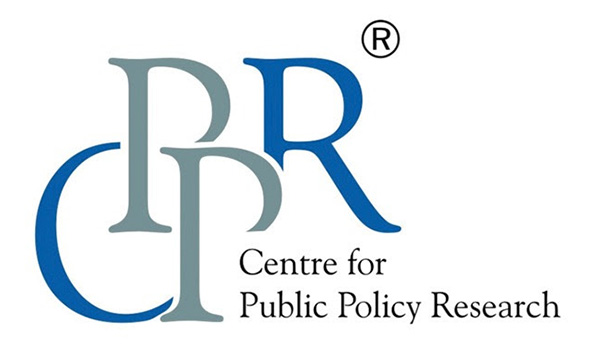Articles

‘Transport sector accounts for lion’s share of GHG emissions’
August 21, 2023
International Conference on India-UK Partnership in the Indo-Pacific
August 21, 2023Navigating Ambiguity: The Dichotomy Between Development and Transport Plans in Urban Mobility Services

With the world’s second-largest road network, Indian roads carry 85% of passenger traffic and 60% of freight traffic and are thus the lifeline of the nation’s development. However, the overreliance on private vehicles has resulted in traffic congestion, road safety issues, and environmental impacts. Today, it is imperative to prioritise comprehensive transport planning and emphasise the role of public transport in the development plans of cities.
According to the Road Statistics of India (2017-18), the road density in India is 1.62 km/sq.km, higher than that of the USA (0.68 km/sq.km) and China (0.49 km/sq.km). This increased road density is a consequence of the suburban sprawl surrounding Indian cities, unlike the compact and well-planned cities in developed countries. The horizontal expansion in Indian cities has led to longer trips for urban residents, increasing travel demand and traffic congestion. This increased travel demand and the inefficiency of public transport to cater to the travel demand of the residents resulted in an exponential increase in the private vehicle count on our roads, resulting in a high number of road accidents and fatalities. The Ministry of Road Transport and Highways recorded an average of 422 deaths/day on our roads in 2021, a death rate of more than 2 plane crashes/day.
To tackle these alarming statistics, effective urban planning strategies should be implemented, focusing on developing and improving public transport infrastructure and services. Development plans, as statutory documents for city development, should include detailed transportation system information and propose strategies to address traffic problems.
While the Urban and Regional Development Plan Formulation and Implementation (URDPFI) guidelines mandate the inclusion of Comprehensive Mobility Plans (CMP) in development proposals, in reality, such plans are rarely found in development or Master plans. The CMP, which is prepared under JNNURM, serves as an additional document that justifies transportation proposals. It offers a visionary outlook on long-term mobility patterns, emphasising the integration of land use and transport and enhancing the mobility and accessibility of the population.
Presently, development plans primarily focus on road expansion and bridge construction to manage traffic issues. The development plans of our cities continue to try to control traffic problems in a firefighting mode to achieve “basic service for all road users”, thus allocating road space to whichever vehicle occupies it first. The result is that a bus carrying 40 people is allocated only two and a half times the road space that is allocated to a car carrying only one or two people. Urban transport plans necessitate a paradigm shift from vehicle-centric to people-centric strategies, enhancing urban mobility and livability.
Recognising the need for comprehensive transport planning, the Indian government introduced the National Urban Transport Policy, 2006, which aimed to integrate urban transportation into the early stages of urban planning. However, in practice, land use and transportation planning are often conducted separately. This separation in making plans is like clapping with a single hand.
For instance, in Surat, the Development Plan 2035 prepared by the Surat Development Authority and the Comprehensive Mobility Plan 2046 prepared by CEPT University are separate documents, leading to disparities in their proposals. It is crucial to revise the development plan in accordance with the recommendations from the Comprehensive Mobility Plan to ensure consistency and clarity in transport planning.
The Toolkit for Comprehensive Mobility Plan (CMP) Revised 2014 states that
“If the recommendation by the CMP on urban growth patterns differs from the one in the master plan, the CMP recommendation may be reflected in a future version of the master plan.”
In cities where a development plan is not available, the CMP can serve as the starting point for its preparation. It is always advisable to develop the CMP alongside the preparation of a development plan so that the integration of the CMP into the development plans can be done efficiently. Integrating CMP into the development plan of a city will address the problems related to traffic congestion and accidents only if the plans prepared in the CMP are focused on public transport. A comprehensive multi-modal transportation system that seamlessly integrates various modes of transport has the potential to significantly enhance the quality of public transportation for urban residents. However, it is important to recognise that the efficiency of such a system relies on the alignment between a city’s development initiatives and the mobility strategies of its public transport network.
Therefore, an optimal approach to achieving the desired transformation is to integrate mobility plans and public transportation into the overall development plan. As Enrique Peñalosa said, “A developed country isn’t a place where the poor have cars. It’s the place where the rich use public transport”. When mobility plans and public transportation initiatives are woven into the fabric of the city’s development plans, they can address critical issues and facilitate seamless transportation, thereby benefiting urban residents and promoting a sustainable, inclusive environment.
(This article is first published on APN News, Urban Transport News)
Views expressed by the author are personal and need not reflect or represent the views of the Centre for Public Policy Research.

Nikhil Ali is an Associate, Research at the Centre for Public Policy Research. He completed his graduation in Civil Engineering from Sree Narayana College of Engineering and is a seasoned Civil Engineer with working experience at Tata Realty and Infrastructure Ltd. With a passion for urban planning, he acquired his master's degree in Urban Planning from Hindustan Institute of Technology and Science, Chennai. His expertise lies in Urban Mobility, land use planning/analysis, and water-sensitive planning.

